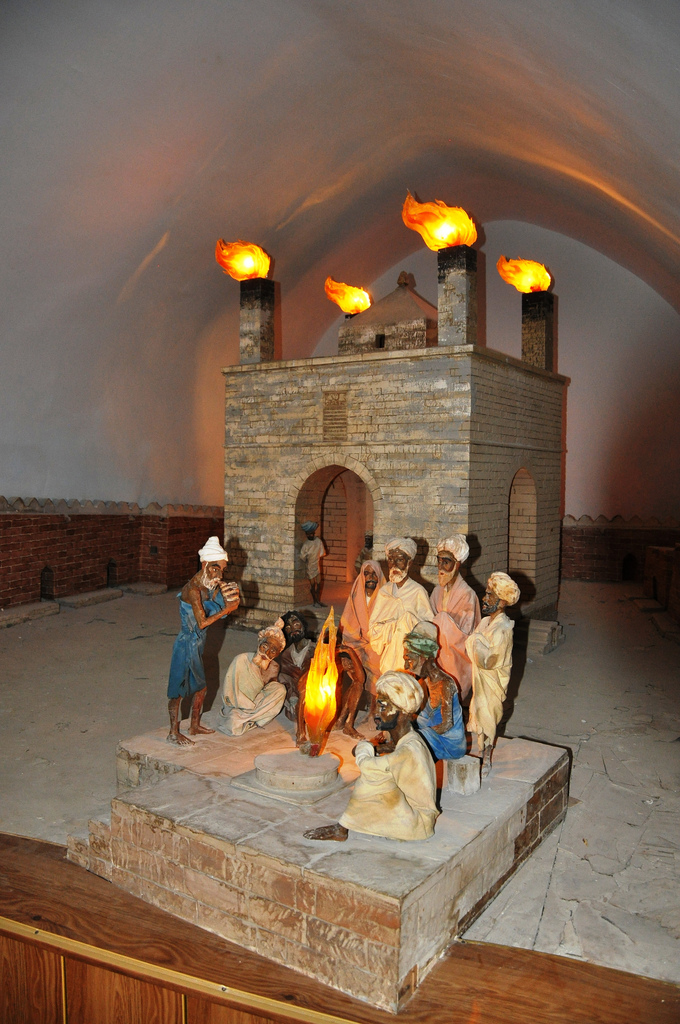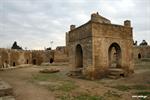 Though based on the fire-worship, Zoroastrism emerged as an independent religion. M.Bors pointed out that Zoroastrism had been the most ancient among the prophetic religions. The Holy book of this religion Qatas that was part of Avesta was sent down to Zoroaster, religious teacher and prophet (6th century B.C.). According to some sources Zoroaster's father came from Azerbaijan. According to Zoroastrism, the world lays on two components-the Good and the Evil, which lead constant struggle with one another. The world of the Light, Goodness and Justice is embodied in Hormuzd (Ahura-Mazda), the world of the Darkness, the Evil and Tyranny in Ahriman (Ahura-Manyu).
Though based on the fire-worship, Zoroastrism emerged as an independent religion. M.Bors pointed out that Zoroastrism had been the most ancient among the prophetic religions. The Holy book of this religion Qatas that was part of Avesta was sent down to Zoroaster, religious teacher and prophet (6th century B.C.). According to some sources Zoroaster's father came from Azerbaijan. According to Zoroastrism, the world lays on two components-the Good and the Evil, which lead constant struggle with one another. The world of the Light, Goodness and Justice is embodied in Hormuzd (Ahura-Mazda), the world of the Darkness, the Evil and Tyranny in Ahriman (Ahura-Manyu).
The struggle will be finally won by the Good and the active followers of Ahura-Mazda in his struggle against the Evil and Tyranny will meet with the happiness of eternity. The ideas of the happiness of eternity, sins and good deeds prove the maturity of Zoroastrism. Zoroaster urged people to be more just and purer and to struggle against any meanness.
Fire occupied the important place in the Zoroastrian beliefs therefore Zoroastrians were often considered fire-worshippers. Zoroastrians thought corpses nasty and therefore did not bury them into the ground but kept them in special places in the mountains for birds and worms to eat. Only after that they gathered the purified bones and buried them.
The Zoroastrian beliefs acquired the form of dogma in the 3rd century B.C. Zoroastrism spread on the territory of Azerbaijan till Derbend due to the military and political progress of Sasanies. Iranian Zoroastrians were moved to the country for spreading the new religion. At the same time Zoroastrism adopted local features in Azerbaijan. The Caucasus Albanians buried jewelries and kitchen utensils together with their dead owners. It is also known that after the purification of the bones of dead people, they were placed in a big pot-like coffin and thus buried. The dead people were also buried in the ground, pottery coffins, underground tombs, hollow graves.
Constant wars between Sasanis and Byzantines for expanding their areas of influence in Azerbaijan resulted in strengthening of either Christianity or Zoroastrism. In such conditions Islam found way to the most intensive and peaceful spreading in the country.
Since the Middle Ages Zoroastrism could not react to the cultural and political requirements of the time thus losing its actuality.











